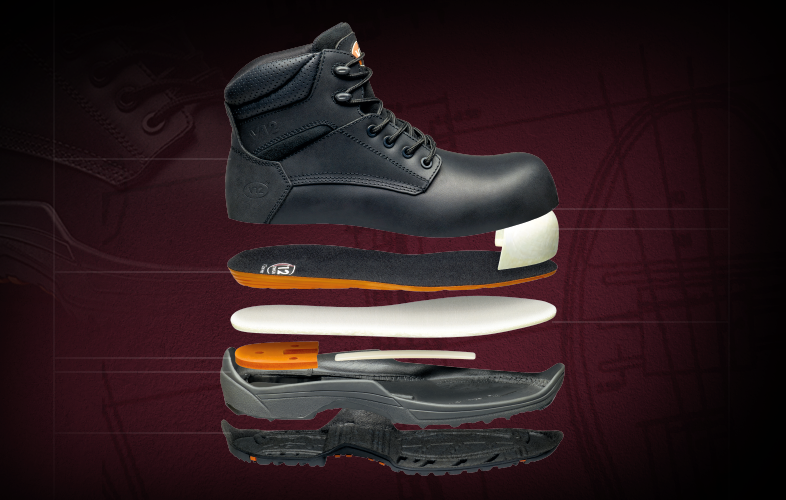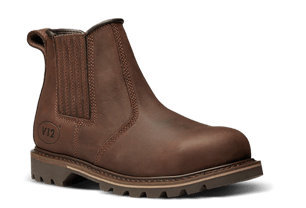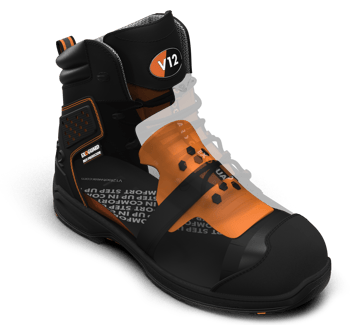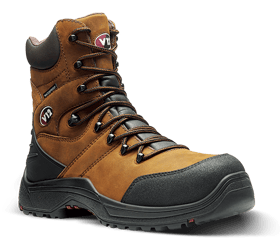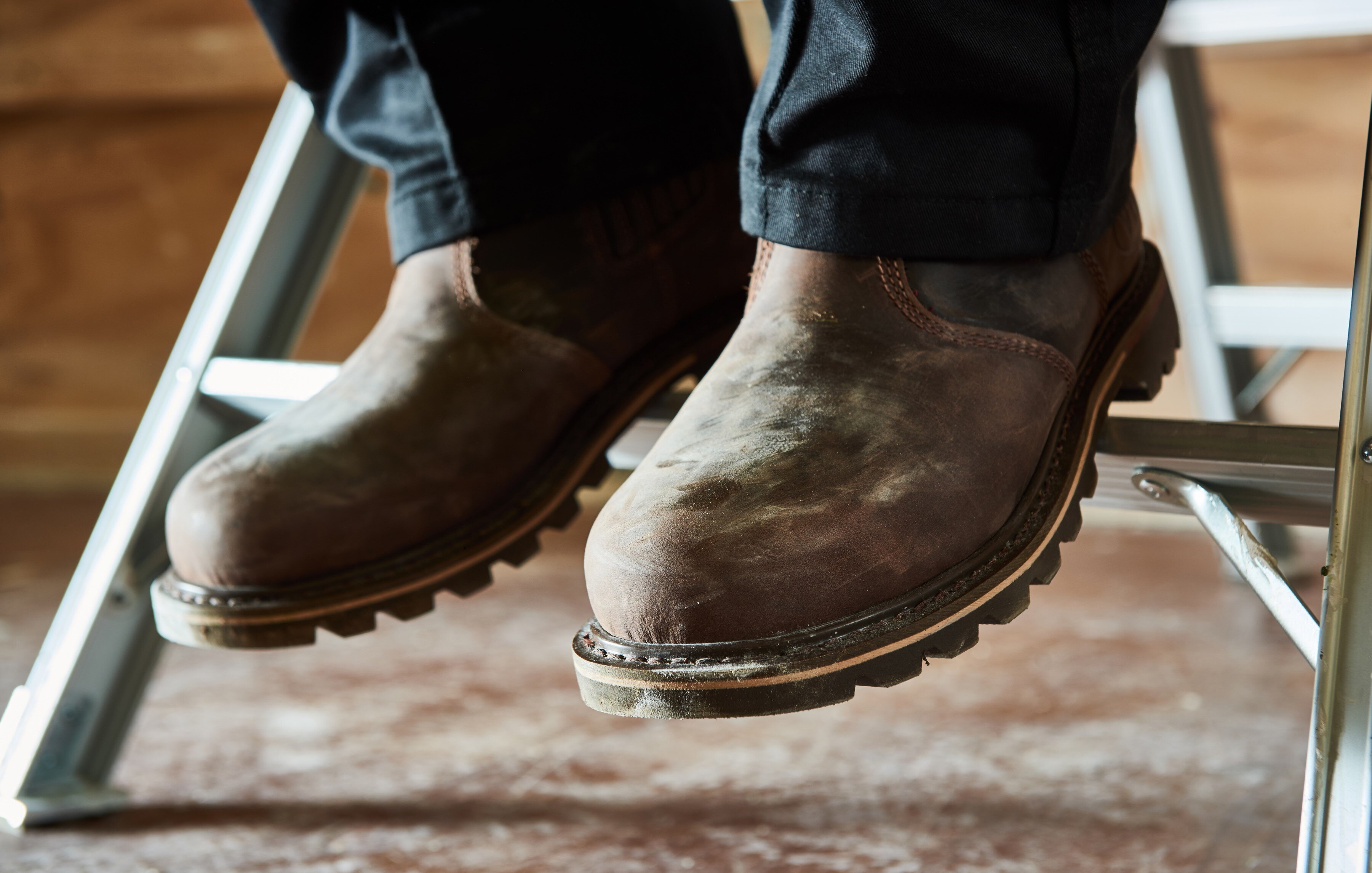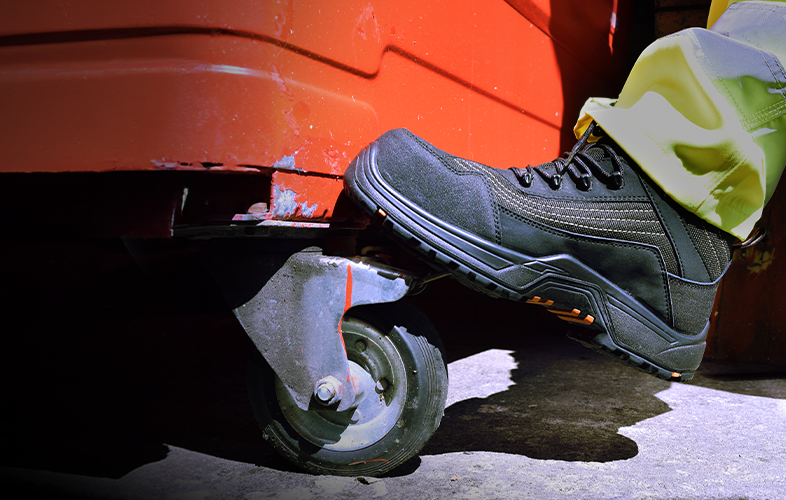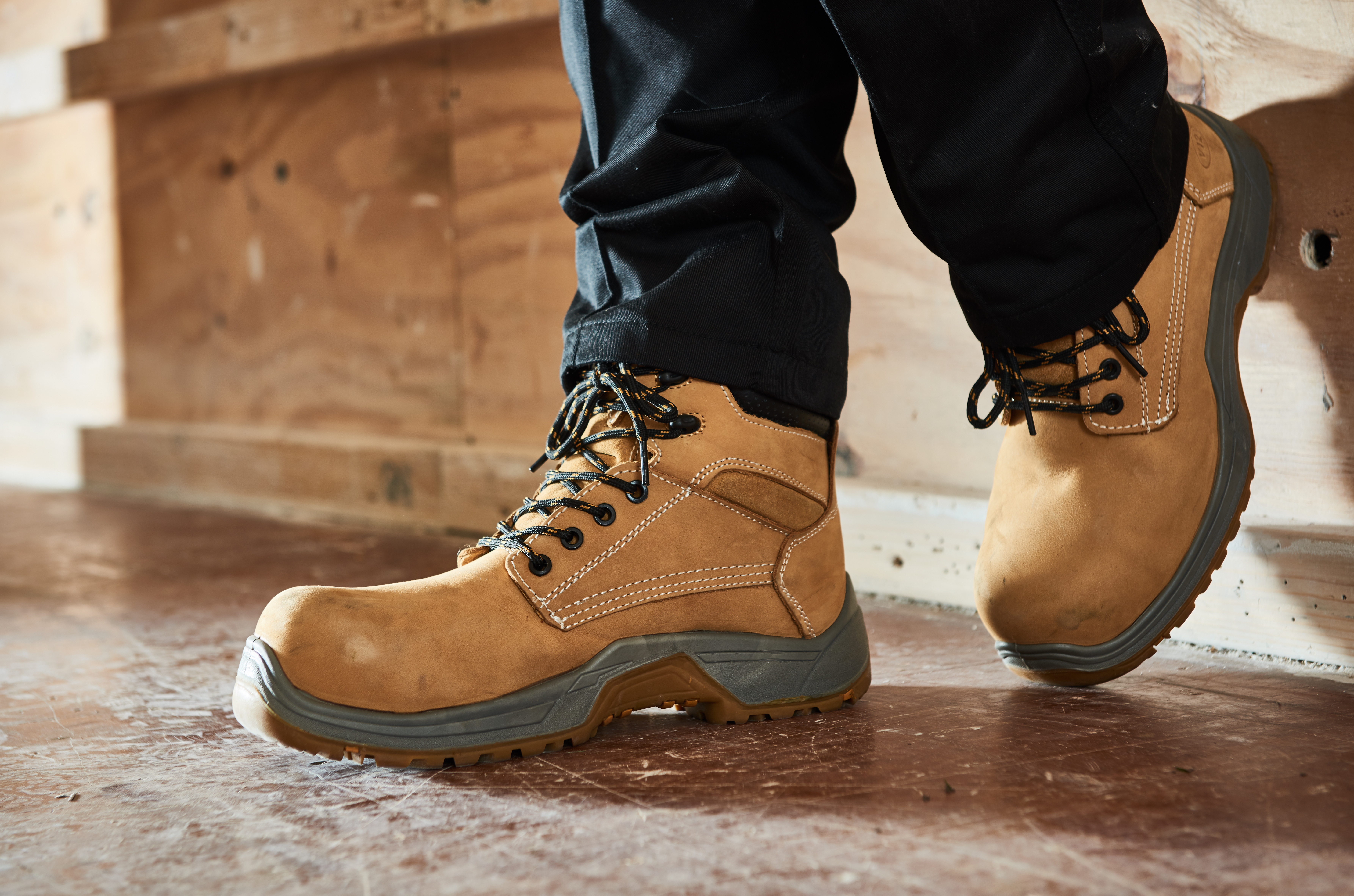Have you ever thought about what makes up the cost of a safety boot? From materials and labour to components and transportation, in this blog, we’re going to show you why a safety boot costs what it does, as well as ask the question - given the essential job they do in protecting wearers - are they really that expensive?
MATERIAL
By far the most common material for safety and non-safety footwear is cow leather. But did you know there are many different types of leather used for safety footwear?
TYPES OF LEATHER
FULL GRAIN
Full grain leather is the highest quality and most durable type of leather, because it’s the entire grain of the cow’s hide. No part of the leather is split or rubbed down, so it remains tight and robust, with strong and natural water resistance. Because full grain is the premium cut of leather, a boot made of this material will be more expensive.
CORRECTED GRAIN
Corrected or ‘split’ leather uppers are made by taking full grain leather and splitting it horizontally to make two layers, essentially so manufacturers have more material to work with. As corrected grain features less genuine leather, it is less expensive.
NUBUCK
Nubuck is leather which is sanded and buffed on the outer surface to create a velvety feel and a stylish look. People often think that Nubuck and Suede are similar or interchangeable, but Nubuck offers far better water-resistance, while suede tends not to have strong water-repelling properties, so this puts Nubuck material at the mid-high price range.
Pictured: V12's best selling dealer boot V1231 Rawhide boasts the vintage Nubuck look.
SYNTHETIC UPPERS
Synthetic or ‘non-leather’ material provides an alternative to leather uppers – you may have also heard of them being referred to as faux leather or vegan leather, because no animal hide is used. Non-leather materials for uppers such as microfibre tend to cost manufacturers slightly more than leather. This is because the leather industry is much more common, meaning the supply chain is more established and so access to raw materials and factories is easier. As a result, vegan footwear tends to be slightly more expensive than leather.
For the full run-down of types of leather and their characteristics, head to this blog now.
COMPONENTS AND COST
As you can probably imagine, safety footwear costs more than regular footwear because they feature components that have to protect the wearer to the legal European standard under EN ISO 20345. A toecap and a degree of slip resistance are mandatory features, but a safety boot can, depending on the wearer’s job role and environment, require highly specialised safety components ranging from ankle protection and a waterproof membrane to thermal insulation and industry-specific grip - all of which create an additional cost to the manufacturer which is reflected in the price of the boot. Take a look at the video below for our Lynx range as an example of just how much technology and safety innovation lives under the upper of a safety work boot.
COMPONENTS AND QUALITY
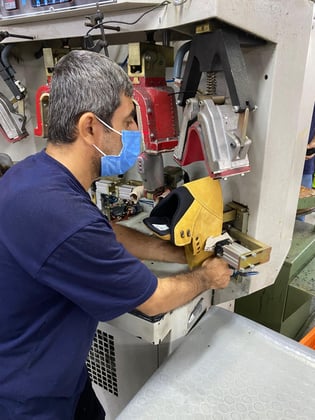
Some wearers have noted that V12 boots can be a slightly higher price than competitors, but this is largely because we insist on using high-level components that we can guarantee will reliably perform in real-life safety environments. This means our wearers can have total confidence in the product on their feet.
For example, we use premium-quality rubber and PU compounds which are above and beyond the industry testing requirements, so our outsoles are more durable.
Our insistence on top-level components also means that the toecap and midsole on every pair of V12 boots is guaranteed to not only pass but exceed the testing standards, and provide superior slip resistance.
PUTTING EXPENSE INTO CONTEXT
Ultimately, better performing components cost more money. And when you’re trying to save money – as many of us currently are, there are times when choosing a less expensive product might be necessary.
But when it comes to protecting your feet, in the end, a higher price is often a reassuring sign of quality. And perhaps more importantly, while it's good to assess how expensive a pair of work boots is, it's also very useful to consider what the price of 2 months off work is, what the price of weeks in pain is, or even what the price of losing a toe is. And when we start thinking in these terms, we start to ask ourselves 'are my safety boots really that expensive?'
“Very safe - I hit my foot with an axe by mistake and the boot took the impact. My foot was completely fine thanks to these amazing boots.”
Review left by a V1231 Rawhide wearer
Imagine what kind of injury, pain, distress and loss of income this wearer could have faced had he been wearing an inferior safety product which had not been diligently tested or checked during production? And imagine how glad this wearer was that he spent a little bit more on his safety boots so he didn't have to spend a lot of time in pain and off work.
FOOTWEAR FOCUS
Let’s take a closer look at some of V12 products’ specialised components which keep our wearers protected and comfortable day in, day out.
V2180 INVINCIBLE IGS
When it comes to high-level componentry, it doesn’t get more cutting-edge than Invincible. Developed over two years of intensive research, V2180 Invincible is V12’s most advanced safety boot ever, using pioneering technology to offer its metatarsal protection.
At the heart of Invincible is the ExoGuardTM, (pictured) a patented protection system with an internal carbon strap, giving unrivalled met protection, along with a dual density PU pad which further safeguards the metatarsal area with shock-absorbing properties.
So, when you consider the amount of innovation V12 have developed so the Invincible can provide highly specialised protection, it’s not surprising that it is a boot at the higher end of our price range.
Learn more about Invincibles' ground-breaking metatarsal protection technology in the video below.
V1250 TOMAHAWK
V1250 Tomahawk is a rigger boot that comes with a waterproof lining, heel support, a padded ankle and a built-in Thinsulate temperature control lining which keeps feet warm even at -20°C. These features, coupled with the fact it’s made from premium full grain leather means that it’s at the higher end of our price range - but the comfort, safety and durability benefits are exceptional.
V1255.01 ROCKY IGS
With full grain leather and a breathable waterproof membrane, the Rocky boasts a covered zip as well as a traditional lace system, and is the perfect combination of easy on/off access and adjustability.
These specialised and premium features mean that it is one of the more expensive lines in the V12 range, as well as the fact that the lining, anti-penetration midsole, toecap and sole compound are all high-level components.
OTHER FACTORS AFFECTing THE COST OF A WORK BOOT
LABOUR
Making safety boots is a time-consuming and labour-intensive process – very different to your standard non-safety footwear. There are a huge number of steps involved between cutting the first piece of leather to packaging the finished product. In a footwear factory, many of these steps - whether it’s stitching, preparing the sole, adding adhesive to the upper, operating the eyelet machine or adding laces and insoles – take time, as they are performed manually. And labour and time creates cost.
ETHICAL EXCELLENCE
We only work with factories who have proven they can meet our ethical trading requirements and international labour practice codes, because we are committed to upholding the rights of all individuals working directly or indirectly for V12 Footwear.
Find out more about our ethical trading standards by visiting our CSR page.
SHIPPING
A lot of companies manufacture their products in the Far East because this region is close to the required raw materials such as leather (40% of all the cows in the world can be found in China and India). While this and the comparatively low wages in Far Eastern nations can drive down the cost initially, the shipping costs in transporting shoes from this part of the world to European destinations is not only significant but can also fluctuate. That’s why often, companies will be forced to put their footwear prices up if the cost of shipping unexpectedly rises.
THE NEED FOR SAFETY
HSE statistics showed that in 2021-2022 in the UK:
- Slips, trips and falls accounted for 33% of all non-fatal accidents in the workplace – the highest annual slip-related accident number in 5 years
- 477,000 workers suffered from a work-related musculoskeletal disorder
- Agriculture and construction had higher workplace injury rates compared to all other industries
While these statistics don’t refer specifically to footwear safety, they are all very sobering reminders of the importance of having reliable slip-resistance and well-fitting footwear - which can contribute to good lower limb health and reduce musculoskeletal problems. The final statistic also reminds us that if you’re a builder or a farmer, accidents aren’t just happening – they are happening far more frequently than in other sectors, and so every opportunity should be taken to invest in reliable and consistently high-performing PPE.
Ultimately, good safety footwear is designed and manufactured to protect the wearer’s feet and prevent injuries that could be life-changing. So, while it’s understandable that some are initially reluctant to make more of an investment, hopefully this piece has illustrated that good quality safety boots are justified in being more expensive than standard footwear.
If you’re interested in learning more about safety footwear and cost, click below to visit our cost in use blog.

